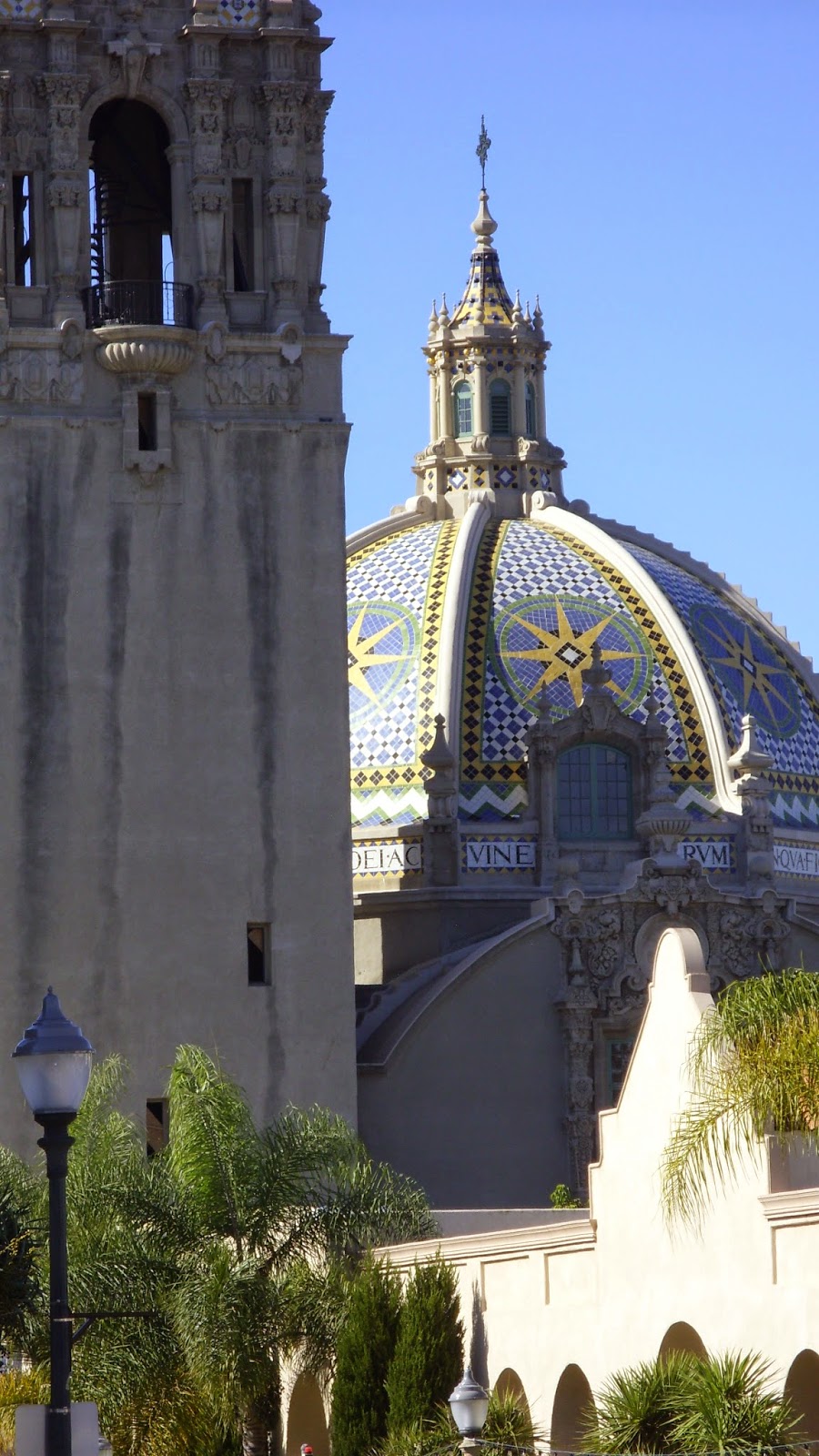A seaside excursion
We arrived on Thursday, 20 November 2014 having flown for more than twenty-one hours: seventeen hours from Oliver Tambo, Johannesburg, to Atlanta in America and then a bit more than four hours from Atlanta to San Diego. We made our way to the Hilton Gaslamp Quarter adjacent to the Convention Center, which was of course where Pieter and Chris were headed for the conference. Strange about this was that we had won ten hours - in South Africa it was already evening but we were at the hotel at around eleven in the morning. Luckily our room was ready.
 |
| The convention centre in San Diego |
We were a little hungry and after quickly cleaning up a little we went looking for somewhere to eat. Chris (Chris de Wet, Pieter's colleague) was in the Hyatt, a different hotel, where we had agreed to meet him. We headed further along the promenade to a place we had spotted from the shuttle. We were surprised to find that this was the restaurant where the seedy bar scene in "Top Gun" had been shot. We were after all in California, home of film making like almost nowhere else.
 |
This is where the seedy bar scene was filmed.
After our ample and fairly good meal (expensive but we quickly learned to accept that food was more pricey than in South Africa), we ambled along the bayfront in the direction of a big sailing ship.
|
We were bone tired but going back to the hotel would only have meant keeling over right away and that would not have been useful for overcoming the jetlag.
The weather was a very pleasant 20-21C despite it being winter. We passed an aircraft carrier which is used as a museum for aircraft. This was super exciting, but we decided to leave it for another day. The sailing ship turned out to be part of another museum containing six of seven vessels with two submarines amongst them. This proved to be our undoing.What an excellent way to spend a few hours.
 |
| A wonderful maritime museum |
There is a replica of an old sailing ship which was used in "Pirates of the Caribbean" - what a stunning ship. It sways in the water where it lies reminding one how insecure one must have felt on such a ship in days gone by.

Next we clambered aboard the big sailing ship we had originally spotted. It still goes sailing and is far bigger than the one we had got onto first. This visit was quite educational as one can look at the different holds and see where people would eat and sleep as well as store goods.
The most fun we had was on the Russian submarine. It is quite narrow and the interior is cramped. To move through it one has to climb through holes about a metre in diameter. One has to really watch one's head as well as there is not much headroom.

Next we got onto the American submarine. This was used for research and not for warfare so the difference between the two submarines is big. It is way more orderly and neat and although spending time enclosed between iron walls below the surface is still a frightening prospect this looks at least more doable.
 |
| The periscope still works. |
There are more ships but we decided the Belvedere, a ferry from bygone years, would be our last stop. This ship still has lovely wooden benches and big windows for sightseeing.
We made our way back to the hotels resisting the temptation of getting onto one of the rickshaws (bicycles with carriages for about three persons each).








































































